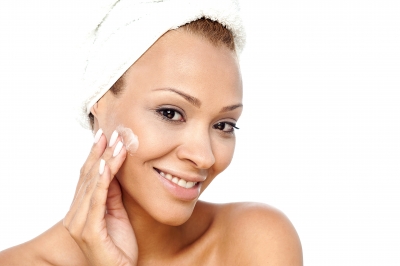Washing your face is an essential part to any skin care routine, as it keeps your skin clean and refreshed. However, you have to still be careful as if you cleanse your skin too much, even if it is you are just using water, you can wash away all of your skins natural oils which can lead to irritation dryness and itchy skin. One way to avoid this problem is to choose the right cleanser for your skin. Here is how to choose the best type of cleanser.
Soap or Soap-free? Which one should you use?
 Cleansers with soap contains surfactants that allow oil and water to be able to mix so that any sebum on the skin can be easy rinsed off. If your cleanser contains too much surfactant it can be bad for the skin as it causes dryness and irritation. Many soaps also contain lard and fat which can leave a oily residue on the skin and clog up pores. Soap also changes the pH levels of the skin as soap is alkaline (of about a pH of 8), skin is slight acidic (a pH of 5.5). This can affect your skins good bacterial flora and enzyme activities. Soaps also do not remove make up well.
Cleansers with soap contains surfactants that allow oil and water to be able to mix so that any sebum on the skin can be easy rinsed off. If your cleanser contains too much surfactant it can be bad for the skin as it causes dryness and irritation. Many soaps also contain lard and fat which can leave a oily residue on the skin and clog up pores. Soap also changes the pH levels of the skin as soap is alkaline (of about a pH of 8), skin is slight acidic (a pH of 5.5). This can affect your skins good bacterial flora and enzyme activities. Soaps also do not remove make up well.
So if you find soap too harsh on your skin, you should try a cleanser using synthetic detergents or a soap-free formula. Whilst they might not sound very appealing they are a lot more gentler on the skin and are more effective in removing make up. The pH levels are closer to your skin, so it will leave your skin feeling a lot less dry and tight after cleansing.
Image credit: Photo by stockimages
So which cleanser works the best on your type of skin? Here are the list of different types of face cleansers.
Types of Face Cleansers
Cleansing Oil
These are usually made of either mineral or vegetables oils and are best used for removing make up. They do feel heavy and leaves an oily film on the skin which can block pores. It is recommended to follow up with a toner to remove any residue.
Recommended Cleansing Oils:
Cleansing Milks & Creams
These a formulated using water and oil emulsions. It is also good for removing make up but doesn’t feel as oily and heavy as a cleansing oil. It is still recommended though, to use a toner or astringent afterwards.
Recommended Cleansing Milks & Creams:
Soap-free Cleansers
Soap-free cleansers contain a synthetic detergent and depending on the formula they may or may not lather. They work well to remove make up but aren’t as effective at removing oil as soaps are. However they are a lot gentle on the skin and are more suitable for sensitive skin types.
Recommended Soap-free Cleansers:
Acne Cleansers
This type of cleanser can contains strong ingredients such as benzoyl peroxide, sulphur or salicylic acid. These ingredients can be very drying on the skin and cause irritation. You should only use these types of cleansers if you have is you have a serious acne problem.
Recommended Cleansers:
Superfatted Soaps
Superfatted soaps are soaps that contain added “fatty” ingredients such as cocoa butter, paraffin, lanolin and other moisturizers. They are more suitable for dry skin as they have added moisturizers but you just need to be careful as they can leave pore clogging residue behind.
Recommended Superfatted Soaps:
Transparent Soaps
These tend to also be less drying than regular soaps as they contain fats and glycerine. The main issue is they do not lather up well and melt quickly. It still can leave an oily residue behind on the skin.
Recommended Transparent Soaps:
When choosing a cleanser also avoid using regular soaps as these are very drying and harsh on the skin. Always take note what type of skin you have whether it is oily, dry, sensitive or acne-prone as there are specific cleansers for these skin conditions. Also check if your if your cleanser is oil-free as, if it contains any oils you should follow up with a toner to avoid block pores.













